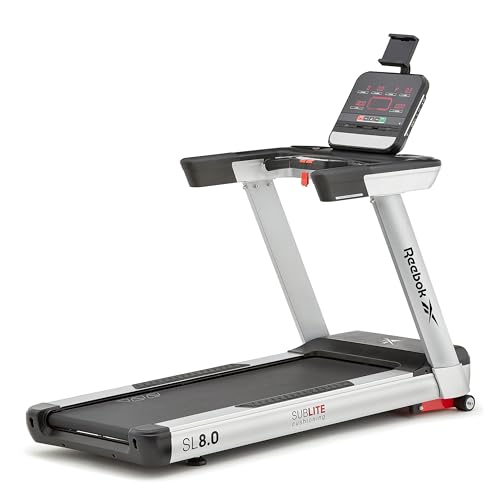The Rise of Non-Electric Treadmills: An Eco-Friendly Choice for Fitness Enthusiasts
In recent years, the fitness industry has witnessed a rise in need for non-electric treadmills. As individuals end up being more mindful of their carbon footprint and seek sustainable choices for their workout regimens, non-electric treadmills have emerged as an attractive option to their motorized counterparts. This blog post digs into the advantages, types, and functions of non-electric treadmills, culminating in a comprehensive FAQ area to resolve typical questions.
What is a Non-Electric Treadmill?
A non-electric treadmill, typically described as a manual treadmill, operates without a source of power. Instead of being propelled mechanically, the user's body weight and motion drive the belt. This style develops an unique experience, typically requiring more effort but providing several benefits in regards to fitness and sustainability.
Benefits of Using Non-Electric Treadmills
- Sustainability: Non-electric treadmills remove the need for electricity, making them ecologically friendly. This reduction in energy intake can considerably add to lower electricity expenses and a reduced carbon footprint.
- Enhanced Workout Efficiency: Users must actively engage their muscles to maintain speed, which can cause more efficient workouts. This increased effort can equate to a greater calorie burn compared to electric designs.
- Versatility: Many non-electric treadmills can be adapted to provide various incline levels. This function enables users to personalize their workouts, targeting different muscle groups and challenging themselves in new ways.
- Sturdiness: Generally, non-electric treadmills have less mechanical parts than powered variations, resulting in lower maintenance expenses and increased durability.
- Compact Design: Many non-electric treadmills are designed with portability in mind, making them easy to move and store, perfect for those with minimal space.
Types of Non-Electric Treadmills
Non-electric treadmills can be classified into numerous types based upon design and features:
| Type | Description | Pros | Cons |
|---|---|---|---|
| Woodway Treadmills | Understood for their curved shape, providing an unique running experience. | Decreases influence on joints, ideal for runners. | Typically more pricey. |
| Flat Non-Electric Treadmills | Fundamental style offering uncomplicated functionality. | Affordable and simple to utilize. | Might not have advanced functions. |
| Incline Manual Treadmills | Enables users to set an incline for included trouble. | Versatile and adjustable workouts. | Can be physically requiring. |
| Folding Non-Electric Treadmills | Space-saving designs that can be easily saved away. | Convenient for small home. | Might be less sturdy than non-folding options. |
Secret Features to Consider
When selecting a non-electric treadmill, consumers must focus on the following functions:
- Build Quality: Ensure that the frame is tough and made from durable materials to withstand daily usage.
- Running Surface: A broader and longer running surface supplies a more comfortable experience, particularly for taller individuals.
- Incline Options: Adjustable incline settings can boost exercise variety and intensity.
- Weight Capacity: Check the weight limitation to guarantee the treadmill accommodates all designated users.
- Portability: If area is an issue, try to find a light-weight treadmill with wheels for simple movement.
- Guarantee: A great guarantee shows the manufacturer's self-confidence in their product, providing assurance to customers.
Non-Electric Treadmill vs. Electric Treadmill
| Function | Non-Electric Treadmill | Electric Treadmill |
|---|---|---|
| Source of power | Manual (no electricity needed) | Requires electricity |
| Maintenance | Very little, frequently needs no repairs | May require mechanical servicing |
| Calorie Burning | Normally greater due to user effort | Varies, frequently lower for the same speed |
| Customizability | Restricted to manual adjustments | Offers different pre-set programs |
| Cost | Typically more budget-friendly | Can be more expensive due to functions |
Often Asked Questions (FAQ)
1. Are non-electric treadmills ideal for beginners?
Yes, non-electric treadmills can be ideal for newbies, although they might require a steeper knowing curve for those not familiar with manual treadmills. Manual Treadmill Uk on a low incline can ease beginners into their physical fitness journey.
2. How do I maintain a non-electric treadmill?
Maintenance is minimal. Regular cleansing and looking for any wear on the belt or deck can assist extend the life of the treadmill. Constantly refer to the manufacturer's standards for comprehensive upkeep instructions.
3. Can I work on a non-electric treadmill?
Definitely! Numerous non-electric treadmills are created to accommodate running. Nevertheless, users ought to begin by walking and slowly increase their pace and incline as they construct strength and endurance.
4. How do non-electric treadmills deal with weight?
Many non-electric treadmills have a weight capacity similar to electric models. Nevertheless, it is important to check the requirements to guarantee appropriate assistance for the user's weight.
5. Are there any drawbacks to utilizing a non-electric treadmill?
Some users may find that non-electric treadmills need more effort, possibly making them more exhausting. Furthermore, they might do not have sophisticated functions found in electric designs, such as integrated exercises or heart rate monitors.
As more individuals look for environment-friendly and efficient fitness choices, non-electric treadmills have actually begun to record the attention of workout lovers. With their blend of sustainability, effectiveness, and durability, these manual devices can elevate any workout routine. By comprehending their benefits, types, and essential functions, customers can make informed decisions in choosing the right treadmill for their requirements, eventually supporting a healthier lifestyle while contributing to a greener world.

